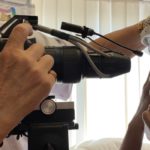What Can Iridology Treat?
Iridology is a non invasive method of uncovering potential health conditions, even before the symptoms arise. This is done by examining the coloured area of the eye, known as the iris. Iridology has been practiced in various forms for many hundreds of years. It was initially practiced using a magnifying glass and torch, which some practitioners still use to date. Modern Iridology cameras have since been developed, enabling digital photos to be taken. This is useful as it enables both the Practitioner and the Patient to see the photos and understand better the Iridology Findings. Digital Iridology photos also saves the Practitioner time and effort trying to describe and explain what has been seen and enables a record to be kept so that these photos can be compared with future photos to monitor the progress or deterioration in the specific organ. Necessary steps can then be taken to amend recommendations as required.
 Iridology charts such as the example shown on the right are used by Iridologists to make these observations. The Iridology charts have been created after observation of a variety of irises over the years. The Iridology Charts divides the iris into zones that represent certain parts of the body. Each marking and zone in the iris represents a different aspect or organ of the human body. Iridologists can discover some markers of inflammation in certain specific areas. For example, the brain area is between 11 o’ clock and 1 o’clock in the iridology chart and the feet at 6 o’clock in the iridology chart.
Iridology charts such as the example shown on the right are used by Iridologists to make these observations. The Iridology charts have been created after observation of a variety of irises over the years. The Iridology Charts divides the iris into zones that represent certain parts of the body. Each marking and zone in the iris represents a different aspect or organ of the human body. Iridologists can discover some markers of inflammation in certain specific areas. For example, the brain area is between 11 o’ clock and 1 o’clock in the iridology chart and the feet at 6 o’clock in the iridology chart.
The following are some of the main conditions Iridology can detect and with early detection, result in treatment to prevent or reverse the specific weakness in the body’s organs.
Iron Deficiency Anemia
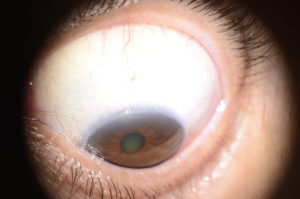
A blue tinge around the outer iris per the photo on the left indicates iron deficiency anemia. This is a condition where the person lacks sufficient red blood cells to carry adequate oxygen to the person’s body tissues. As a result, the person will feel constant tiredness and fatigue, despite getting lots of rest and sleep. This may affect the person’s mood, energy levels and ability to perform or concentrate adequately on work or normal daily routines.
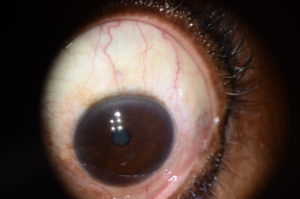
High Cholesterol
When cholesterol builds up in the eyes, a white or grey ring can form around the iris as shown in the photo on the right. This is called arcus senilis, which is a common sign of aging. This can indicate high cholesterol and triglycerides, and a greater risk for stroke and heart disease. Indications of high cholesterol and arteriosclerosis is normally symptomatic of poor food intake such as regular consumption of fatty, fast and processed foods.
Severe lack of Vitamin C
This is normally reflected by inflamed capillaries or burst capillaries in the sclera, which is the whites of the eyes. Persistent lack of Vitamin C can lead to a condition called Scurvy. Symptoms include easy bleeding such as nose bleeds, easy bruising, joint and muscle pains and constantly getting colds or flu as the immune system is weakened. The person may be eating lots of fruits and vegetables that contain Vitamin C, however at the time of consumption, these foods may not be fresh, having been cut or plucked several days, weeks or months prior to consumption. Such foods, despite being naturally high in Vitamin C, may not contain good quality Vitamin C by the time it is consumed, even if the food is organic.
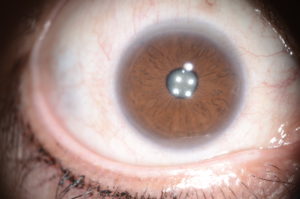
Diabetes
A thick dark ring around the outer pupil area is an indication of too much processed sugar in the body. Iridology cannot confirm that one is Diabetic or Pre-Diabetic or how serious the condition is. However, these signals would result in the patient being recommended to undergo more specific tests to confirm the Iridology findings.
Watch our short video to learn more on How To Use Iridology To Spot Diabetes.

Tumours
Tumours are unusual growths that may either be benign or malignant. Benign tumours are those that stay in their primary location without invading other sites of the body. Benign tumours are not usually problematic and do not spread to other parts of the body. Malignant Tumours are cancerous and invade other sites.
Similar to Diabetes, whilst Iridology cannot confirm tumours, any unusually dark marks in the iris can indicate a possibility of early signs of malignant tumours and the patient will be highly recommended to undergo further tests to confirm the Iridology findings.
 Lymphatic System Weaknesses
Lymphatic System Weaknesses
This is common in those with blue irises. A poorly working lymphatic system causes tissues to become swollen with fluid. This results in swelling in your arms and legs, although other parts of the body can be affected too.
If left untreated, tumours involving the lymphatic system can develop.
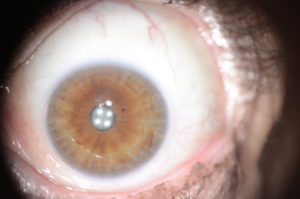 Digestive Issues
Digestive Issues
Problems with the digestive system, in particular, the stomach and intestines can present themselves via discolorations around the pupil. Different darker tones in the iris, especially just outside the pupil indicates a toxic digestive system. This could be caused by constipation and constant intake of junk and processed foods. Depending on the location of the darker tones, this could indicate blockages in the ascending, transverse, descending and/or sigmoid colon.
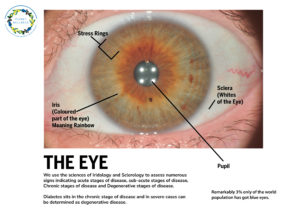 Stress Rings or Contraction Furrows
Stress Rings or Contraction Furrows
This indicates the level of stress in various parts of the body. For example, one ring all round the iris indicates that the person is at least 20% stress. The more rings, the more serious the stress and this could indicate severe depression, anxiety and even suicidal tendencies.
Anyone of any age, including babies, younger children, adults and the elderly experience stress at various points in their lives. When detected early using Iridology, necessary action can be taken before it escalates into severe anxiety, depression and even suicide.
Weaknesses in various organs
This could include the lungs, liver, gallbladder, thyroid, heart, genitals, kidneys, arms and feet. Often, these weaknesses may not only be caused by lifestyle. For example, most brown and darker coloured irises would have tendencies for liver weaknesses. Liver weaknesses can also be detected by examining the whites of the eye, known as the sclera, for signs of jaundice. Liver weaknesses may not necessarily be caused by alcohol consumption. Negative emotions such as stress, anger, jealousy and frustration will also affect the liver. Likewise, sadness could affect the lungs. A mark in the kidney area could indicate insufficient hydration or other kidney problems.
The above are non exhaustive examples of health conditions Iridology can detect and therefore treat. It is highly recommended that you explore this non invasive tool as part of your regular health check.
To learn more about What Can Iridology Can Treat, check out our other related blogs:
Iridology Pictures and Meanings
Can You See Illness In Your Eyes?
Can Iridology Detect Heart Problems?
NEXT STEPS
Book in a complimentary 15 minutes Zoom call with us (valued at £99) to enable us to clarify questions you may have on a specific health concern.



